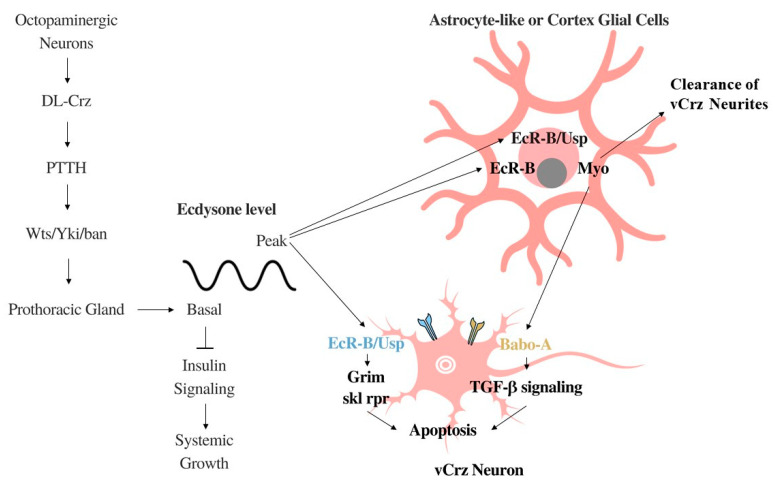Figure 2.
DL-Crz regulation of basal ecdysone production as well as the two pathways leading to vCrz apoptosis and one regarding the clearance of the resulting neural debris. Beginning at the left of the figure, DL-Crz neurons express octopamine receptors and innervate PTTH cells to modulate basal ecdysone production in the prothoracic gland. In the middle and right portion of the figure, basal ecdysone acts on the fat body to inhibit insulin signaling, thereby negatively controlling systemic growth. When ecdysone levels peak, it binds to either Astro-like or cortex glial cells at the EcR-B receptor to trigger the production of Myo, which binds to the Babo-A receptor in vCrz neurons causing apoptosis via TGF-β signaling. Ecdysone also binds to the EcR-B/Usp receptor complex which transforms astrocyte-like cells only into phagocytes which clear neural debris produced by Crz neuron apoptosis. Finally, peak ecdysone can also act on vCrz neurons directly via the EcR-B/Usp receptor complex to cause apoptosis through the major and the two minor death genes, grim and sickle (skl)/reaper (rpr), respectively [55,58].

